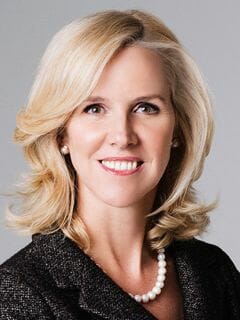May 12, 2022 - The Joint LSTA and LMA Conference – the first in-person NYC event hosted by the LSTA since the pandemic began more than two years ago – took place on May 11th and was packed with LSTA members. LSTA’s Executive Director, Lee Shaiman, opened the conference with his welcome address during which he expressed concern about the prospects for credit-risk assets like leveraged loans. He noted that prospects are beginning to dim from inflation, monetary tightening, snarled supply chains, realigning geopolitics, and the return of the regulatory state. He warned that loose documentation has provided borrowers with aggressive adjustments to EBITDA broadening incurrence restrictions that are already festooned with baskets liberalized by carryforwards, carrybacks, “highwater” marks, reallocation, and reclassifications and asked members to stop pushing the limits of deal structures. Although for years such terms have plagued the market, credit has held up, the default rate has remained historically low, the rating agencies ratio of upgrades to downgrades is positive, and the portion of the index rated CCC has declined, with a 75% chance of a recession occurring in the next two years, now we must be more careful. Perhaps it is time to tap the brakes, revisit those credit agreements, and advise client borrowers that this is not the time to push the limits. If we fail to re-evaluate the credit of today, the confidence in our market is at risk of evaporating.
The LMA’s Gemma Pardew-Lawrence then took the stage to highlight some of the LMA’s recent achievements noting the successful launch of their new product, LMA Automate, which offers LMA members the ability to automate LMA documents, their continued and critical work on ESG, and the impressive increase in the number of LMA in-person, remote, and hybrid educational offerings. She noted that the LMA would have more work to do this year on Brexit-related issues.
The primary market panel, led by Clifton Prabhu of Credit Agricole, with Lewis Grimm of Jones Day, Reinhard Haas of Commerzbank and Maria Dikeos of Refinitiv then compared the loan markets in Europe and the US. They focused on Russia’s invasion of Ukraine which hit financial markets worldwide and was followed by numerous sanctions and outright bans from the UK, EU, and US – all three of them working together. In Europe, energy intensive industries such as the automative industry will likely suffer the most as they will face a commodity and supply chain shock, lower demand, and increased costs, which will pressure margins and, potentially, lead to still more supply chain disruptions and shutdowns. For a month, the European loan market remain shuttered after the invasion and about $30 billion of underwritten deals had not cleared the European market by mid-April because of the war. The war was not the only shock in Europe with pandemic shocks continuing in Europe. During the pandemic, personnel issues hit the loan market, and closers were (and remain) in short supply sending trade settlement times higher – taking often 6 months for those European par loan trades to settle.
When polled, 50% of conference attendees believed that a global recession was the largest systemic risk to the US and European loan markets this year, with 36% viewing inflation as the largest risk. Polling by the LSTA at the London conference 6 weeks earlier was similar with 43% of delegates identifying inflation as the biggest systemic risk. The majority of the audience – 70% – believe that the US loan market will either contract or remain flat this year.
Those polling results teed up the next conference speaker, Apollo’s global economist, Torsten Slok, who delivered his view of what’s in store for the loan market. Although supply chain issues will eventually improve, inflation could be a more long term problem. The latest inflation number standing at 8.3% represents a mixed blessing for our floating rate market. High inflation is driven by supply chain problems and by the growing demand coming out of the post-pandemic lockdown. Because of high inflation, the Fed is hiking rates and is expected to increase interest rates nine more times this year. If the Fed increases rates too quickly, there could be a hard landing – the consensus of 25% believing that the economy will indeed experience such a hard landing. This is leading to a lot of uncertainty and volatility in the financial markets, making credit selection and stock picking key in such turbulent times. Although the Fed is increasing rates the US consumer is still not responding and thus if we finish the year and inflation remains at 5% the Fed will need to remain hawkish. Added to this is the concern relating to the Chinese COVID lockdowns which may mean that inflation will continue to be a problem in the US for longer than originally anticipated.
Next was the direct lending panel led by Deborah Staudinger of Hogan Lovells who was joined by partners, Paul Mullen and Matt Schernecke, and Dave Crescenzi, of MidCap Financial Services and Matt Darrah of Principal Alternative Credit. They noted that the continued growth of private credit was not surprising because direct lending offers attractive features to borrowers, including certainty of terms, which are locked in before closing because there typically is no ability to flex, and other efficiencies driven by there being a single lender or only a few lenders taking part in a club process. Ultimately, all agreed that direct lending has a bright future and will continue to evolve to serve its borrower community.
Geopolitical strategist and Founder of Global Torchlight, David Chmiel, delivered the afternoon keynote address. Perhaps surprisingly to those of us on this side of the pond, more than 50% of Europeans polled (with the exception of those in Finland) thought an invasion by Russia into the Ukraine was likely in the winter. With so many opposing the use of military force and preferring the use of “weaponized capital” to punish Russia, governments will continue to examine how the use of sanctions can serve their interests. However, governments must tread carefully because today’s citizens generally trust business more than their own governments. Noting that the phenomenon of inflation has both psychological and political implications, Chmiel warned that the increase in world food prices, which have hit their highest rate in 60 years, could lead to civil unrest similar to the Arab Spring a decade ago. Chmiel concluded with an apposite quote from Admiral Sir Tony Radakin, Chief of the UK Defence Staff: “In the Cold War, we were adversaries. Now we are close to Kissinger’s view of co-evolution. We compete. We co-operate and try to trade like crazy. We contest. And we even confront. But frequently we are doing all at the same time, in the same place and even with the same state.”
ESG – a topic referenced in each morning session – was given its due in two dedicated panel discussions. LSTA’s Tess Virmani led a discussion between Jennifer Kozicki of Ares, Alison Fenton-Willock of KKR and Tamara Cizeika of Allen & Overy focused on the regulatory and commercial drivers of ESG and identifying challenges (and potential solutions!) to ESG data collection in the loan markets. The panel pointed out certain regulatory disclosure mandates, such as SFDR, have gotten support from private investors and investors have begun to ask for this information as well in some cases. With the further push for information, the unavailability of ESG data in the loan markets is being felt more acutely. There has been broad uptake of the LSTA’s Questionnaire, but the information solicited there is qualitative and merely a baseline. Quantitative data, such as a borrower’s Scope 1 and Scope 2 emissions, is now a need to have. The LSTA is working with the Alternative Credit Council and the UN PRI to harmonize ESG data requests and standardize reporting and intends to conclude that project by mid-September (watch that space…). In a separate session, Gemma Lawrence-Pardew of the LMA led a discussion on current developments in sustainability linked lending. Panelists Robert Lewis of Sidley, Sukhvir Basran of Hogan Lovells, Jonathan Gardiner of Bloomberg and Tess Virmani of the LSTA dived into the greenwashing risks that can appear when proper care is not used in structuring SLLs. Ensuring that targets are ambitious and that lenders are afforded enough time for proper diligence of the selected KPIs and targets are critical. The popularity of the SLL structure looks set to only grow further and as SLLs appear in new loan market segments it is imperative that market participants preserve the integrity of the structure in line with the Sustainability Linked Loan Principles.
Aleksandar Dukic of Hogan Lovells then moderated the regulatory panel with Kuang Chiang of Allen & Overy, Carlton Greene of Crowell & Moring, and Jeanine McGuinness of Orrick. Their focus was the US sanctions on Russia. Rather than adopt an outright ban as the US has with different countries such as Cuba, US law today does not view Russia as a comprehensively sanctioned jurisdiction. Although OFAC says it is not a trade embargo, practically speaking it may seem that way to certain businesses as they parse through the lattice work of the directives-based restrictions to work out what exactly is prohibited and permitted. Lenders were cautioned that if a party to a credit agreement is a sanctioned person, the contract will likely be considered blocked property and everything under the contract must stop until a license from OFAC is obtained.
The conference closed with LSTA’s Meredith Coffey and Allen & Overy’s Fiona Fitzgerald providing a comparison of LIBOR transition in the US and UK. First, the jurisdictions have adopted markedly different replacement rates: Term SOFR in the US vs SONIA Compounded in Arrears in the UK. Second, while the UK largely used bespoke Credit Spread Adjustments (“CSAs”), the US is trying to develop CSA conventions – unsuccessfully thus far – which would be important for some forms of fallback language. Finally, the UK has mostly remediated its “legacy loans” – and suggests it is a bad idea to wait until the last minute. The US needs to remediate some $5 trillion of LIBOR loans before June 30, 2023 – and, alas, economic and convention challenges are slowing the process.
Please click here for the conference slides.






